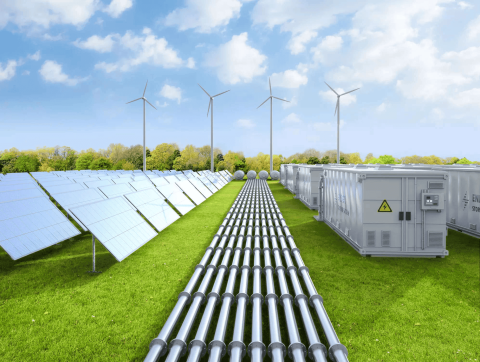IREDA Share Price Remains Rangebound; Breakout Expected Above 182
IREDA share price was trading almost flat on Thursday. The stock is looking strong on the charts but more buying support will be needed for a bullish breakout on the counter. A close above Rs 182 can lead to a bullish breakout on IREDA but selling pressure remains at higher levels.
Indian Renewable Energy Development Agency (IREDA) is no longer a specialized lender operating on the periphery of India’s power sector; it has become the country’s de facto green investment bank. Backed by an FY26 borrowing mandate of ₹30,800 crore, a recent ₹2,006 crore qualified‐institutional placement and a string of oversubscribed green-bond issuances, the agency is rapidly enlarging its balance-sheet capacity to fund every link in the clean-energy value chain—from solar parks and wind farms to emerging bets on e-mobility and green hydrogen. Loan sanctions, disbursements and the outstanding book all grew more than 20 percent in FY25, and first-quarter FY26 numbers show the expansion accelerating.
Borrowing Power: A ₹30,800 crore War Chest for FY26
IREDA’s board has authorised total FY26 borrowings of ₹30,800 crore, a figure designed to match India’s step-change in clean-energy capital requirements. Rather than relying solely on domestic debt markets, management is tapping multiple pools: yen-denominated external commercial borrowings, perpetual bonds priced at an 8.4 percent coupon and dollar-linked green bonds aimed at ESG asset managers. Diversification lowers blended cost of funds and reduces currency-mismatch risk, ensuring the agency can underwrite longer-tenor projects that commercial lenders often shun.
Capital-Adequacy Push: Fresh Equity via ₹2,006 crore QIP
June’s qualified institutional placement injected ₹2,005.90 crore of Tier-I capital, expanding the capital-adequacy buffer and enhancing IREDA’s credit profile ahead of its next sovereign-guaranteed issuance. The raise also signalled investor confidence: the book was covered within hours by domestic mutual funds, pension plans and a clutch of Nordic sustainability funds eager for Asia-aligned green exposure.
Innovative Finance: From Rooftop Solar to Green Hydrogen
Chairman & MD Pradip Kumar Das has cast IREDA as an “innovation hub” for climate finance. In practice, that means flexible structures—a mix of subordinated debt, viability-gap funding and results-based instruments—to crowd in private lenders where risk perceptions remain high. The agency is piloting special-purpose vehicles for distributed-solar leasing and is drafting term sheets for the first green-hydrogen electrolyser projects scheduled to break ground in FY26.
Loan-Book Momentum: Growth in Every Line Item
| Metric | FY24 | FY25 | YoY Change |
|---|---|---|---|
| Loan Sanctions | ₹37,354 cr | ₹47,453 cr | +27 % |
| Disbursements | ₹25,089 cr | ₹30,168 cr | +20 % |
| Outstanding Book | ₹59,698 cr | ₹76,250 cr | +28 % |
First-quarter FY26 numbers point higher still: sanctions reached ₹11,740 crore (up 29 percent YoY) and disbursements ₹6,981 crore (up 31 percent). The outstanding book—₹79,960 crore by end-June—already surpasses FY25’s closing balance.
Sector Mix: Solar Leads, but Diversification Widens
As of December 2024, solar projects drew 26 percent of cumulative disbursements; wind stood at 18.4 percent. The remainder spans small hydro, bioenergy, hybrid projects, energy-efficiency retrofits and nascent lines such as e-mobility and battery storage. Every rupee is, by charter, green-tagged, making IREDA one of the few lenders worldwide whose entire portfolio aligns with climate-finance taxonomies.
Global Capital Links: Yen Loan Underscores Foreign Appetite
A recent ¥26 billion facility—complete with a ¥10 billion green-shoe option—from a Tokyo-based bank highlights how international institutions view IREDA as a transparent conduit into India’s 500 GW non-fossil target. The agency hedged the exposure using natural solar-asset cash flows, demonstrating treasury sophistication rare among public-sector enterprises.
Governance and Disclosure: Raising the Bar
Management has tied executive incentives to metrics such as non-performing asset ratio and climate-impact score, while quarterly disclosures now break out loan performance by project stage and carbon-abatement potential. These moves aim to keep rating agencies onside and ensure that future bond issues remain oversubscribed.
Strategic Outlook: From 500 GW by 2030 to Net-Zero 2070
- Scale Imperative: To finance India’s 2030 target, annual renewable capex must exceed $30 billion; IREDA’s expanded borrowing plan positions it as a keystone lender.
- New Frontiers: Expect specialised credit windows for green-hydrogen electrolysers, offshore wind foundations and grid-scale battery arrays by FY27.
- Risk Watch: Rapid book growth raises concentration and duration exposures; rigorous project appraisal and syndication will be essential to avoid future stress.
Actionable Takeaways for Investors and Policymakers
- Bond Investors: IREDA’s perpetuals and upcoming green MTN programme deliver quasi-sovereign risk with ESG certification—rare yield in a crowded green-bond universe.
- Domestic Banks: Co-lending or take-out financing with IREDA can free up priority-sector quotas while mitigating single-borrower exposure.
- State Agencies: Replicating IREDA’s governance model could accelerate sectoral lending in areas like green transport and circular-economy infrastructure.
Bottomline — IREDA’s Expanding Green Balance Sheet
From its new capital buffer to the largest borrowing plan in its history, IREDA is scaling at a pace commensurate with India’s renewable-energy ambitions. Loan-book growth north of 25 percent, sectoral diversification and an unblemished green mandate place the agency at the epicentre of Asia’s fastest-growing clean-tech market. Execution risks—credit discipline, interest-rate swings, project delays—remain real, but for now IREDA looks set to remain the financial engine propelling India toward its 500 GW target by 2030 and net-zero milestone in 2070.
